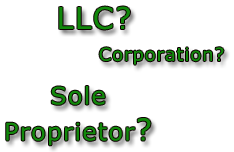
Minding Her Own Business:
The Self-Employed Woman's Essential Guide
to Taxes and Financial Records
| Author: | Jan Zobel | |
| Publisher/Date: | Sphinx Publishing (Sourcebooks) / 2005 (4th Edition) | |
| ISBN: | 1-57248-455-1 (Paperback, 239 pgs. w/index) | |
| Related Website: | Jan Zobel's Website |
If you're self-employed, you know there's a big difference between being a "small-business owner" and being a "successful small-business owner." The learning curve is pretty steep — particularly if all you've ever known is how to be an employee for someone else.
So where's a soul go to pick up the necessary info?
Well, there are quite a few books aimed at the beginning small-biz owner. I've read a small handful of them, and so far, one book has stood well apart from the rest.
Jan Zobel, an enrolled agent (that's a form of certification issued by the IRS) who's based in California, used her twenty-five-plus years of experience and put together Minding Her Own Business: The Self-Employed Woman's Essential Guide to Taxes and Financial Records. Ms. Zobel's book is a fabulous and well-written resource — easily the best I've yet found for small-biz owners. And that goes for male, female ... or otherwise.
What's It Cover?
Put simply, Minding Her Own Business covers pretty much everything you need to know as a new small-biz owner. Here's a bit from the introduction:
You're also the one who has the responsibilities of being self-employed. And high on that list is your responsibility for keeping good financial records and meeting your tax obligations. You may choose to get help with part or all of this. Ultimately, however, the buck stops with you, so it is important that you understand what's needed.
While MHOB touts itself as a "tax book for women," I'm here to tell you that its content is treasure for anyone who picks it up. Here's a cursory glimpse of how Zobel's work breaks down, section-wise:

- Section 1: Getting Started
Discusses the different types of business entities (corporations, LLCs, sole-proprietorships, etc.) available to you, as well as what's involved with setting each one up. You'll also find info regarding the different permits and licenses you may need in order to stay on the good side of your state and local authorities. Topic covers 16 pages. - Section 2: Keeping Records
What records and documents do you have to keep? What can you send to File 13? Here's where you'll find out. Topic covers 35 pages. - Section 3: Working with Employees and Independent Contractors
Which might as well be titled "Here There Be Headaches." If you're moving from being an employee to having some employees, this is the section you'll want to get nice and cozy with. Topic covers 20 pages. - Section 4: Identifying Deductible Expenses
As Zobel tells us, this is the section that many readers turn to first. There's also some info here regarding the retirement-plan options available to self-employed folks. Topic covers 52 pages. - Section 5: Filing Tax Forms
Shows and discusses the different tax forms used by small-biz owners. Topic covers 24 pages. - Section 6: Making Estimated Tax Payments
Ours is a pay-as-you-go tax system, and the Feds expect you to play ball on their terms. That means filing and forking over your estimated taxes throughout the year. This section (as well as Appendix B below) are where you'll get all the gory details. Topic covers 15 pages. - Section 7: Getting Help
"If you don't have enough money to pay your taxes, are looking for help with your business bookkeeping, are concerned about being audited, or are wondering how long to keep records," writes Zobel, "then this section answers all your questions." Third-party tax preparation and tax software are also discussed. Topic covers 16 pages.
Those seven sections are comprised of forty-one chapters. Following that, you'll find a nice glossary and several appendices:
- Appendix A: How to Reconcile a Bank Statement
- Appendix B: How to Calculate Estimated Tax Payments — A Step-by-Step Example
- Appendix C: Resources for Small Business Owners
- Appendix D: State-by-State Taxation Department Information
Notes and Such
I was impressed that Minding Her OWn Business contains so many examples of the IRS forms it talks about, as well as a great deal of very straightforward and understandable examples of everyday small-biz financial calculations. Way too many business self-help books leave these items out. It's odd, because I've found that such non-text items are almost a necessity when it comes to getting tax concepts crammed into my dense brain.
A topic that I'm sure brings many people to MHOB is that of home-office deductions. In order to give you some idea of Zobel's clear and free writing style, here are a couple of passages on that subject:
And this, regarding how you'd calculate the home office deduction:
Summary
I happened upon Mind Her Own Business simply because I was looking at another small-biz how-to book at Amazon, and an Amazon reviewer of THAT book suggested MHOB instead. I bought both books, and as it turned out, the Amazon reviewer's suggestion was dead on.
This is by far the best small-biz "taxes, recordkeeping, and such" book I've read. Most others are more complicated, and needlessly so. Zobel's work is tops, in my opinion. And it'll take a mighty impressive showing by another author to unseat Minding Her Own Business.
I don't see it happening any time soon. 
Minding Her Own Business:
The Self-Employed Woman's Essential Guide
to Taxes and Financial Records
| Ratings are on a scale of 1 to 5, with 5 being the top ranking. | |
|
readability: Was it an enjoyable read? | 
|
|
believability: Could this work for me? Could this apply to me? | 
|
|
price vs. content: Is it worth the money? Would I read it again? | 
|